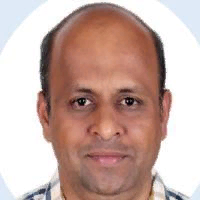
Vaibhav Narawade
Work place: Department of Computer Engineering, Ramrao Adik Institute of Technology, Nerul
E-mail: vnarawade@gmail.com
Website:
Research Interests: Image Processing, Network Architecture, Image Manipulation, Image Compression, Computer Architecture and Organization, Computational Science and Engineering, Data Structures and Algorithms
Biography
Dr. Vaibhav Narawade is a Professor in the Ramrao Adik Institute of Technology at Nerul affiliated to University of Mumbai where he has been a faculty member since 2019. Professor Narawade area of expertise includes Wireless Sensor Network, Image Processing, and Data Science. He has having and Administrative He has served University of Mumbai as Member 2010) and currently also served as Member of Management Council and Member of Senate, University of Mumbai (2017 to 2022), In Academics he is a n Computer Science and Engineering, Information Technology fraternity, and Faculty Narawade has author / coauthored in various International conference / journal publications and book chapter. He is a fellow of ISTE and ACM.
Author Articles
Enhancing Performance Evaluation for Video Plagiarism Detection Using Local Feature through SVM and KNN algorithm
By Ekta Thirani Jayshree Jain Vaibhav Narawade
DOI: https://doi.org/10.5815/ijigsp.2021.05.04, Pub. Date: 8 Oct. 2021
Nowadays in the digital world, there are lots of videos being uploaded to video, and social media sharing platforms are growing exponentially. About the Internet and multimedia technologies, illicitly copied content is a serious social problem. Since the internet is accessible to everyone, it is easy to download content and re-upload it. Copying videos from the internet can be considered plagiarism. In this paper, a method is proposed for feature extraction of video plagiarism detection. This framework is based on the local features to identify the videos frame by frame with the videos stored in the database. It becomes important to review the existing video plagiarism detection methods, compare them through appropriate performance metrics, list out their pros and cons and state the open challenges. First of all, it will pre-process the data with the help of SIFT and OCR Feature extraction. After that, the system applies the video retrieval and detection function using the two classifier algorithm the SVM, and the KNN. In the first stage, when the query is compared to all training data, KNN calculates the distances between the query and its neighbors and selects the K nearest neighbors. It is applied in the second stage to recognize the object using the SVM algorithm. Here we use the VSD dataset to predict the plagiarized videos. And the accuracy of these plagiarized videos after comparing them is 98%.
[...] Read more.Other Articles
Subscribe to receive issue release notifications and newsletters from MECS Press journals